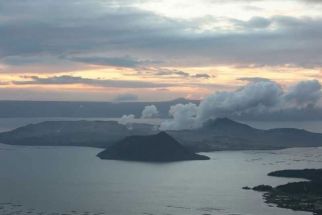UPLB pushes national greening program
Manila, Philippines - The University of the Philippines-Los Baños (UPLB) announced it wiIl be using the best weapons in its scientific arsenal to produce all the tree seedlings and crops needed for the government’s National Greening Program (NGP).
UPLB scientists have been working hard on cloning techniques and tissue culture to increase the volume of materials required by the NGP, which envisions the planting of up to 1.5 billion trees in 1.5 million hectares of public land over the next six years.
Chancellor Luis Rey Velasco confirmed that the university has been fast-tracking the selection of indigenous species for the program since its approach is to maximize technology applications for the massive reforestation campaign.
Among the tree species UPLB is propagating with the use of biofertilizers are penus, dipterocarps, alnus, casuaria, acacia and eucalyptus.
Part of the program is the expanded cultivation of crops in areas to be reforested to boost efforts in providing income to upland dwellers and other NGP participants, with the Department of Agriculture taking the lead in this component.
The Department of Environment and Natural Resources (DENR) has chosen Mykovam and Mycogroe, both of which are microbial fertilizers that help make seedlings resistant to infestations and more tolerant of environmental stresses, as the key elements in nourishing seedlings.
“It will solve the problem of low survival of trees since the government has begun mass production of planting materials to enable impoverished upland communities to become more responsible environmental stewards,” Velasco pointed out.
Ramon Razal, former dean of the UPLB College of Forestry who specializes in forest product utilization, said they are looking at propagating tissue culture for fast-growing trees even as government scientists are pushing for technologies on “selection processes” to ensure that trees will be disease-resistant, taller and with wider diameters.
Right now, Razal said, tissue culture is being used only for some fast-growing trees like gmelina and eucalyptus.
Research projects are being undertaken as well to improve indigenous Philippine species of teak, molave and narra using the best possible scientific techniques.
Environment and Natural Resources Secretary Ramon Paje said DENR’s target is to increase the country’s environmental stability.
“Biodiversity conservation is crucial to the Philippines since the country is one of the 17 “mega diverse countries,” home to five percent of the world’s flora, fourth in bird endemism and is a center of marine diversity.
Paje added that the Philippines is also considered a biodiversity hot spot since it has the third highest rate of deforestation on the planet.
He noted that eight million hectares of forest lands also remain “unproductive, open, denuded or degraded.”
“Each hectare in Mindanao that is nurtured using the best forestry and agricultural practices available already earns P120,000 a year. Theoretically then, eight million hectares could generate between P80 billion and P96 billion annually.
The NGP, the convergence Initiative led by the DENR along with the agriculture and agrarian reform departments, intends to increase sustainable supply of crops and forest-based raw materials to meet national needs.
- Latest
- Trending





























